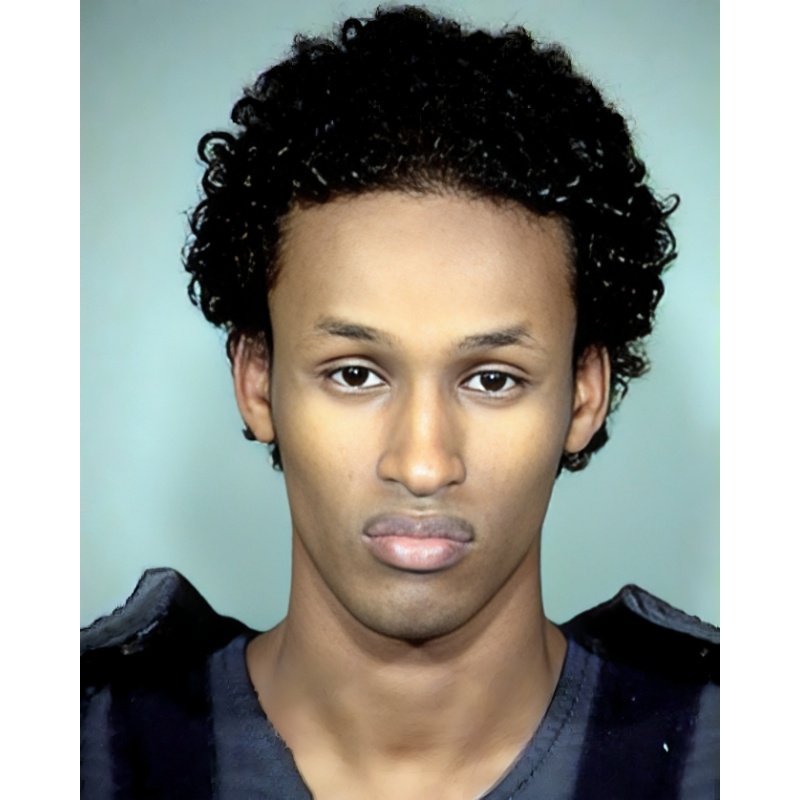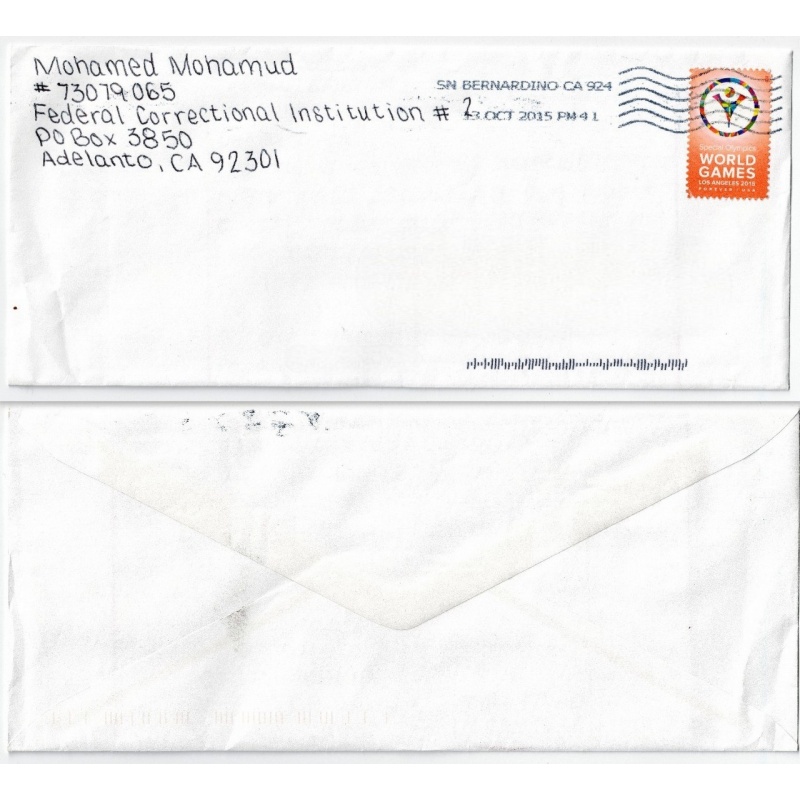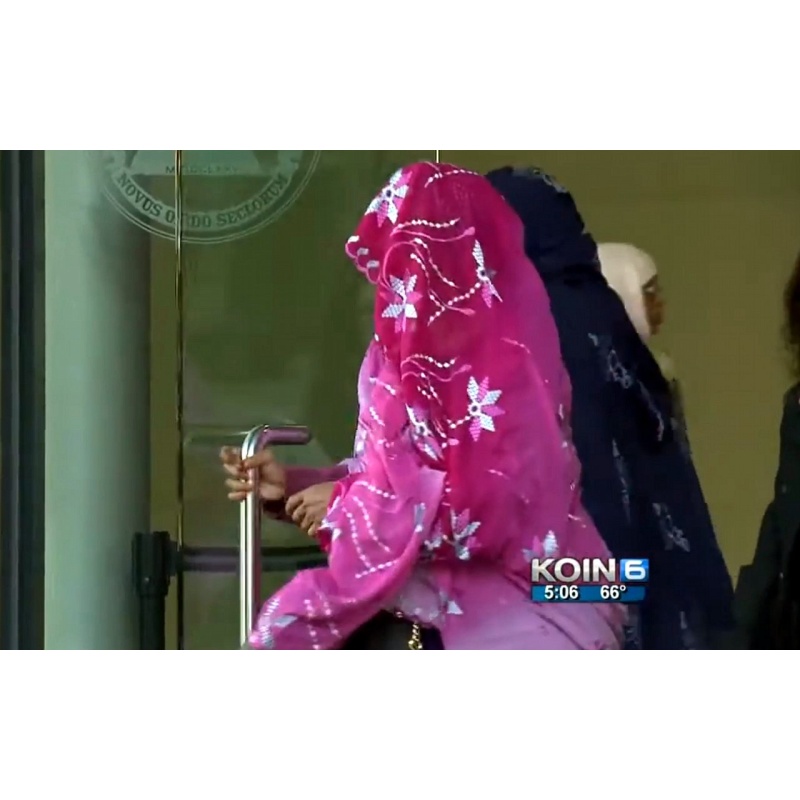MOHAMED OSMAN MOHAMUD | The 2010 Portland car bomb plot | Former University of Oregon University Student declares: “I Hate Americans” | Sentenced to 30yr at FCI Sandstone (MN) | Hand-written ALS
LongfellowSerenade 27
The 2010 Portland car bomb plot involved an incident in which Mohamed Osman Mohamud (b. 1991), a Somali-American student, was arrested in an FBI sting operation on November 26, 2010, after attempting to set off what he thought was a car bomb at a Christmas tree lighting in Portland, OR. He was charged with attempting to use a weapon of mass destruction – 1,800-pound bomb.
To my parents who held me back from Jihad in the cause of Allah.
I say to them ... if you – if you make allies with the enemy,
then Allah's power ... will ask you about that on the day of judgment,
and nothing that you do can hold me back.
It was serious.
He looked me in the eye and had this look in his eye,
like it was his determination in life –
I hate Americans!
I want whoever is attending that event to leave, to leave either dead or injured.
$20.00
- Postage
-
$0.00 to United States
Standard Shipping
Get Additional Rates
- Select Country
- Zip/Post Code
- Quantity
Description
Mohamed Mohamud. Hand-written ALS. Commercial #10 (4.125” x 9.5”) envelope. Pmk: October 13, 2015. SEALED. Content unknown. Pristine.
Mohamed Osman Mohamud (hereinafter referred to as “Mo”) attended the Salman Alfarisi Islamic Center near campus. His Imam, Yousef Wanly, described him as a normal student who went to athletic events, drank an occasional beer and was into rap music and culture. He described Mo as religious, saying he attended prayers in Corvallis once or twice a month over a year and a half.
An attorney for Mo argued that his client was entrapped. On January 31, 2013, a jury found Mo guilty of the single charge against him. He was scheduled to be sentenced on December 18, 2013, however the sentencing was canceled in anticipation of the filing of new motions by the defense. In September 2014, Mo was sentenced to 30 years in FCI Sandstone with credit for time served, as well as lifetime supervision upon release on June 3, 2036.
A federal judge allowed jurors in the Portland bomb plot case to tour a van – loaded with a massive, but phony, explosive – during the terrorism trial of Mohamed Mohamud.
USD Judge Garr M. King (hereinafter referred to as “Judge Garr”) made the ruling during a pretrial conference attended by the 21yo former Oregon State University student.
The government accused Mo of trying to detonate a WMD during the Nov. 26, 2010, holiday tree-lighting ceremony in Portland's downtown Pioneer Courthouse Square.
Mo's lawyers had mounted an entrapment defense, arguing that sophisticated FBI operatives, posing as terrorists, goaded their vulnerable teenage client into a crime he would not have devised on his own.
Jurors in Judge Garr's courtroom went to the basement garage of the Mark O. Hatfield US Courthouse to view the van, which was still choked with a realistic looking explosives that weighs 1,800 pounds. FBI bomb techs rigged the fake bomb and the undercover operatives showed it to Mo as part of the bureau's sting operation.
"It seems to me it's a part of the case," Judge Garr said.
Mo's lead defense lawyer, Stephen R. Sady, argued to no avail that showing jurors the van would unfairly prejudice them and build drama outside the scope of anything his client did.
Judge Garr will allow Mo to take the tour if he wants, and efforts will be made to conceal his ankle shackles so jurors don't see them.
It was among a slew of motions the Judge decided in the case. He granted some, denied others and clarified the instructions he will present to jurors on entrapment law.
Mo's defense lawyers, citing potential bias by jurors against their Muslim, African-born clienti, had asked for six extra chances to strike prospective panelists. But Judge Garr ruled against them, saying he was calling in a pool of 100 for jury selection. Sady said he didn't think that would be enough to pick a jury, but the judge rejected his motion.
"That's more jurors than I've ever called in a case," said Judge Garr.
He granted a government protective order that spells out extraordinary efforts to hide the identities of the prosecution's star witnesses: the undercover FBI operatives who had posed as "Youssef" and "Hussein".
The two men will be allowed to use those pseudonyms, wear what has been described as "light disguises" and travel in and out of the courthouse outside public view. The defense will be forbidden from posing questions that might reveal their true identities; and the public will not be allowed to see their faces, or hear their voices.
When the operatives testify, the public – including news media – will be moved to another courtroom with a closed-circuit video feed. When surveillance videos of the operatives are shown, their faces will be obscured. When they are on the witness stand, the public will hear their voices but not see them.
Sady objected to the cloak-and-dagger measures, saying they will beget "an aura of fear and threat" and confuse jurors.
Judge Garr asked lawyers in the case to draft an instruction for the jury that would explain the precautions.
The judge also ruled that words such as "terrorist", "martyrdom" and "violent jihad" could be introduced into evidence, but he expected lawyers to caution expert witnesses not to make inappropriate use of such loaded terms. Judge Garr said he was inclined to let Mo's lawyers show their client's family photos and to show evidence that he lived a relatively normal life before the events that now find him in Portland's Justice Center jail.
Judge Garr took under advisement a defense motion to exclude an Interpolii "Red Notice" from trial evidence.
The notice, by Interpol, describes one of Mo's contacts, Amro Alali, as a wanted terrorist from Saudi Arabia. Interpol said Alali, a Portland State University student in 2008, "helped the Al Qaeda division in Yemen and other countries by providing them with foreign fighters to carry out terrorist attacks against western and tourists interests," government prosecutors alleged.
AUSA Ethan D. Knight, who heads the Mo prosecution, said the government had significant evidence that Mo knew Alali had "terrorist ties". But defense lawyer Lisa Hay, describing the Interpol notice as hearsay, said no evidence would show that Mo knew Alali was a wanted terrorist. The notice was an accusation, not a conviction, she noted.iii
In October 2014, Mo was sentenced to 30 years in federal prison along with credit for time served since his arrest, as well as lifetime supervision upon his scheduled release in 2036. He is being held at the Federal Correctional Institution, Sandstone, a low-security federal prison in Minnesota.
VIDEO:
Mohamed Mohamud to be sentenced in Portland plot
| https://youtu.be/QgL8EoEeAa8
Archiving Protocol:
• Handled with White Gloves ab initio
• Photo Pages/Sheet Protectors: Heavyweight Clear Sheet Protectors, Acid Free & Archival Safe, 8.5” x 11”, Top Load
• White Backing Board – Acid Free
Shipping/Packaging: Rigid Mailer 9.5” x 12.5”. White, self seal, stay flat, kraft cardboard, no bend. Each rigid mailer is made of heavy cardboard, which has strong resistance to bending and tearing. Thicker that the USPS mailers. Shipping cost never more than it absolutely has to be to get it from me to you.
i Mo was born in Somalia, came to America as a refugee, and grew up in Beaverton, Oregon, a suburb of the Portland metropolitan area. He is a naturalized US citizen. Mo graduated from Westview High School in Beaverton. He attended Oregon State University, but dropped out on October 6, 2010, without having declared a major. At the time of the incident, he was a resident of Corvallis, Oregon.
ii The International Criminal Police Organization, commonly known as Interpol is an international organization that facilitates worldwide police cooperation and crime control. It is the world's largest international police organization. It is headquartered in Lyon, France, with seven regional bureaus worldwide, and a National Central Bureau in all 195 member states.
iii Bryan Denson | The Oregonian/OregonLive | Updated: Dec. 19, 2012, 10:50 p.m. | Published: Dec. 19, 2012, 9:50 p.m.
Payments & Returns
- Payment Methods
- PayPal, Money Order
Postage & Shipping
- Item Location
- 54911, Wisconsin, United States
- Ships To
- Worldwide
- Pick-ups
- No pick-ups
- Returns Accepted
- No









